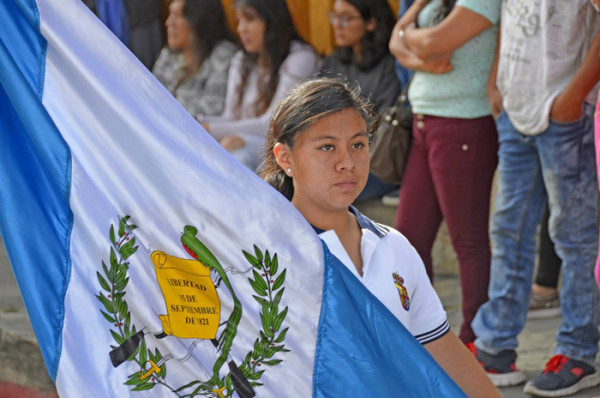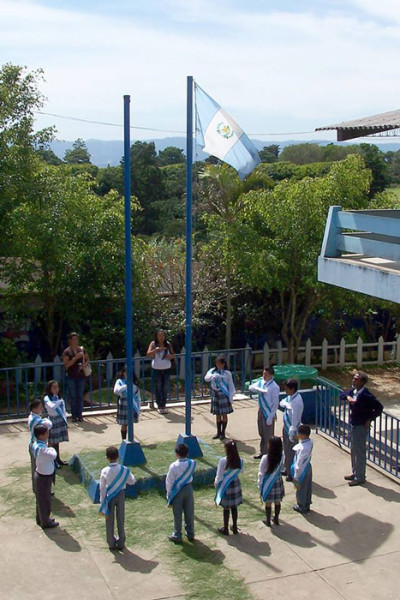Symbols of Guatemala
Guatemalans are proud people, proud of the beautiful country and of the symbols that represent it.
Most of these symbols delight the eye, and some are pleasant to hear, taste, smell, or touch. Spot them all to add to your memory bank of the country, whether you live here or are just visiting.
The blue-white-blue vertical bands of the national flag, with the colorful coat of arms in the center, are easy to spot everywhere, though the sun often fades the sky–blue to a much lighter shade until close to national holidays when schools and government buildings splurge on new flags.
That familiar coat of arms, on coins as in the flag, has a multicolored quetzal bird in its center, with a long serpentine tail that reminded ancient Maya and Aztec peoples of the legendary feathered serpent Quetzalcóatl that tradition says brings light, love, and happiness.
The quetzal represents freedom, as we’re told the bird dies if held captive. Though hard to spot today, quetzals are holding their own in the high forests of Veracruz.
Crossed swords of honor, crossed rifles representing strength, a laurel wreath of glory and knowledge, and parchment with the September 15th, 1821, date of Central American independence from Spain, complete the symbols of the coat of arms.
Another symbol you’ll hear, rather frequently in schools, special events, conferences, and all government meetings, is the national anthem. Each word is known and sung clearly by every Guatemalan. When you hear the first few notes, stand and be prepared for more standing, as every stanza is sung, each followed by a chorus. Children memorizes every word in elementary school. It’s a positive song presented by proud people, unlike some militant, belligerent anthems around the world. It’s easy to sing too, with only an eight-note range, the singers often accompanied by a traditional marimba.
The magnificent ceiba tree, specifically ceiba pentandra, one of some twenty different types of Ceiba, is the sturdy, symbolic national tree. It is often called kapok in English, but it’s “SAY-bah” in Maya legend. The strong, symbolic national tree grows over 230 feet or 70 meters. Ceibas can be spotted throughout the republic, with the most famous a glorious spreading giant in Palin on the roadway from the capital city to the Pacific. “Guatemala,” of course, comes from the Aztec name for the “Land of many trees.”
Have you found all the country’s symbols? It’s a great game for families to try. Of course, the kids are usually the winners.
REVUE magazine article by Ken Veronda
Related reading,
“La Ceiba Tree of Guatemala” by Elizabeth Bell

